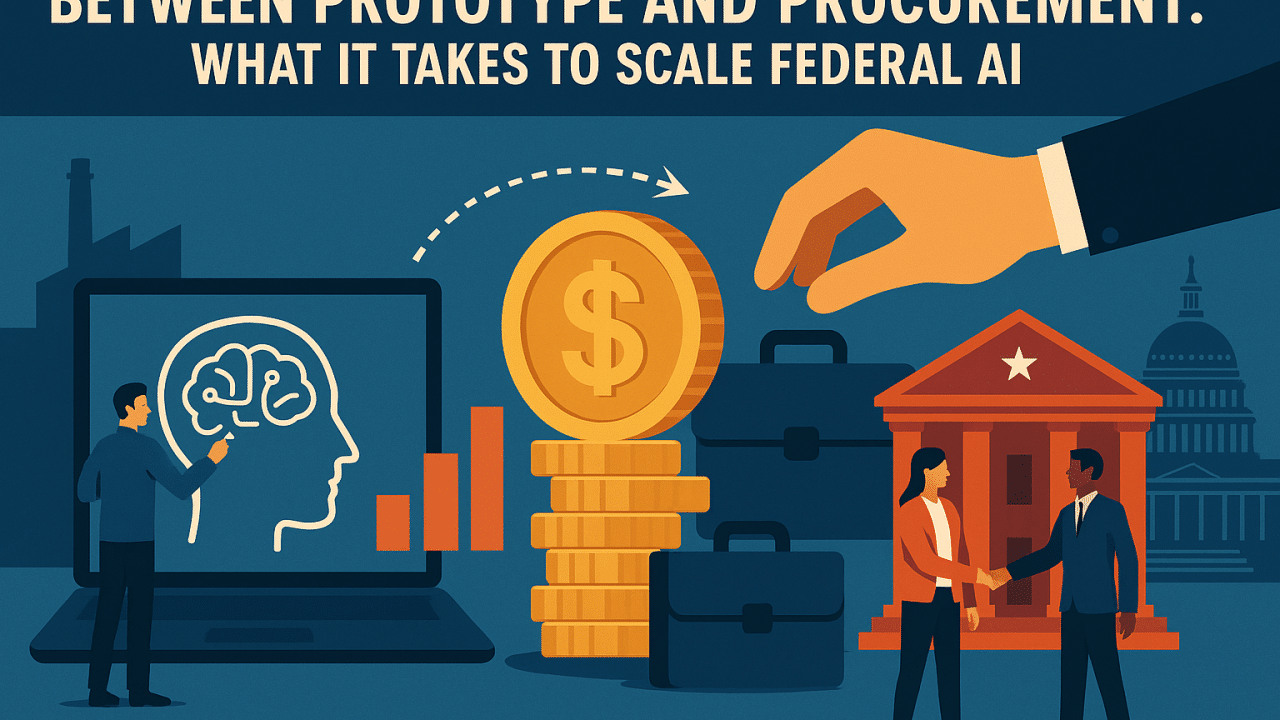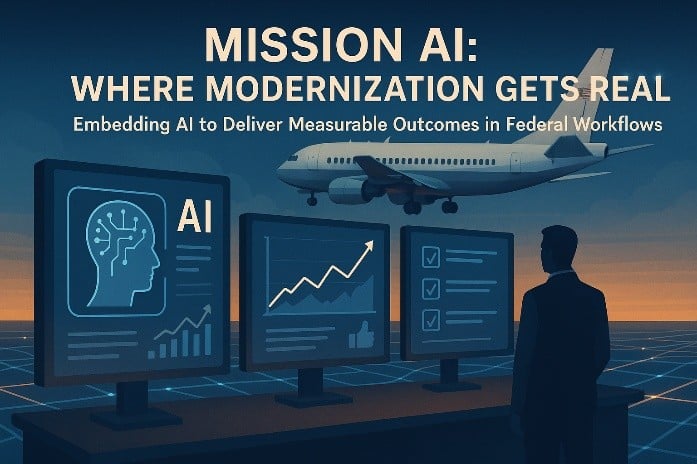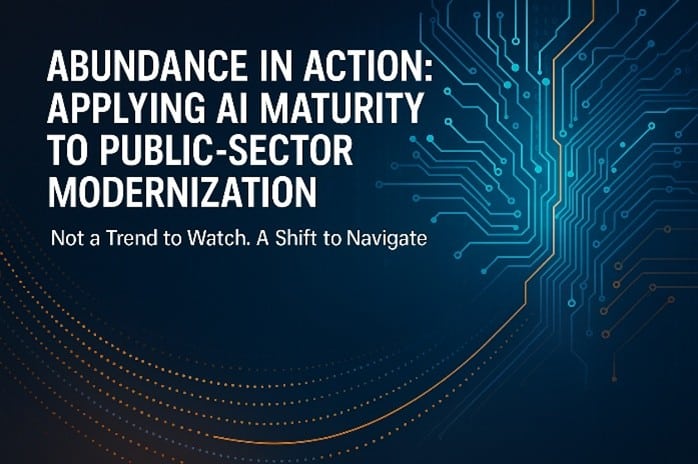Acquisition 2.0: From Paperwork to Performance - Why AI Is Now Foundational
Federal acquisition is entering a new phase. AI isn’t just part of the technology being bought – it’s becoming part of how buying gets done.
At this year’s Northern Virginia Technology Council (NVTC) Impact AI Summit, senior leaders across government and industry echoed a shared reality: AI is becoming as integral to acquisition as cybersecurity. That means changes not just in what appears in contract language, but in how acquisition teams define, select, and manage performance across the lifecycle.
This article brings together three themes from this week’s posts on LinkedIn: how AI supports better SOW/PWS development, how it enables more responsive contract monitoring, and how it can improve vendor evaluation. Each one reflects the broader shift underway – from reactive contracting to performance-oriented acquisition.
1. Building Smarter Scopes with AI
Performance-based acquisition depends on relevant, well-structured scopes of work. But time pressures, legacy templates, and the pace of change often make it hard to tailor SOWs and PWSs to current mission needs.
New tools are helping to close that gap. AI-powered clause generators and contract design assistants, trained on regulatory-compliant structures, offer acquisition teams faster ways to frame performance logic. At the same time, simulation models – sometimes referred to as digital twins – are being used to test workflows and contract assumptions before finalizing them (NVTC Impact AI Summit, 2025).
This is an opportunity to improve the foundation of the contract. Getting it right up front improves alignment, reduces rework, and strengthens accountability over time.
2. Monitoring in Real Time, Not After the Fact
Oversight often operates on a delay. Monthly reports and milestone reviews provide snapshots, but they don’t always capture how performance is evolving day to day.
AI-enabled monitoring tools are helping teams close that gap by offering live insights into SLA status, risk signals, and delivery performance. These tools are increasingly modular, allowing oversight to happen within the flow of the contract rather than as a separate administrative task.
As several leaders at the NVTC Summit emphasized, oversight depends on infrastructure. For AI to support real-time decisions, compute and data capabilities need to be available where the work is happening – not only in centralized systems (NVTC Impact AI Summit, 2025). This is particularly important in mission environments that are disconnected or contested.
For contract managers, this shift can make it easier to identify deviations early and adjust with confidence, without waiting for problems to escalate.
3. Rethinking Vendor Selection with Better Context
Vendor evaluation is often constrained by limited time, generic past performance summaries, or processes optimized for compliance rather than fit.
AI tools are starting to offer more targeted support. By analyzing past contracts with similar conditions, these tools can help teams assess vendors on dimensions that matter to the mission: delivery timelines, adaptation to change, or alignment with specific scope types.
Flexible evaluation models – such as mission-fit scoring, performance clustering, or customizable dashboards – can support better decisions without increasing complexity.
This doesn’t replace professional judgment. It supports it, by making more relevant information available at the right time.
4. From Constraint to Capacity: The Value of Abundance Thinking
In Abundance, Ezra Klein and Derek Thompson describe a shift in mindset – from managing scarcity to building capacity. It’s a useful lens for thinking about AI in federal acquisition.
AI doesn’t eliminate the need for compliance, but it can reduce the time teams spend managing low-value tasks and reinvest that capacity into better outcomes. That includes:
- Designing clearer, more responsive scopes
- Tracking contract performance without manual reconciliation
- Allocating staff time to strategic analysis rather than fire drills
For acquisition professionals, this isn’t about adding more tools. It’s about creating more space to focus on what matters.
5. New Policy Drivers Are Reshaping Expectations
In 2024 and 2025, several federal policies began establishing AI as a requirement – not just an option – in acquisition planning.
- OMB M-24-18 mandated that by March 2025, all new federal contracts involving AI include testing, transparency, and risk reporting requirements – even before the FAR is formally updated (Wiley Law, 2024).
- OMB M-25-21 and M-25-22 outlined expectations for interoperability, vendor neutrality, and responsible AI acquisition across agencies (White House, 2025; Digital Government Hub, 2025; Perkins Coie, 2025).
- GSA developed a compliance guide to support AI-aligned acquisition planning and is piloting contract language based on that guidance (GSA, 2024; PilieroMazza PLLC, 2024).
- DoD established its Responsible AI Strategy and Implementation Pathway, which includes five clear principles that vendors are expected to follow (National Law Review, 2025).
- A Senate bill introduced in June 2024 proposed required AI clauses for safety, trust, documentation, and data use in all relevant contracts (Mintz, 2024).
These actions reflect a growing consensus: AI considerations are now central to federal acquisition – not peripheral.
6. Preparing for What’s Next
Just as cybersecurity moved from best practice to baseline over the last decade – with FAR 52.204-21, DFARS 252.204-7012, and eventually CMMC – AI is on the same path (Acquisition.gov, 2025; Inside Government Contracts, 2025; Wikipedia, 2025; Greenberg Traurig, 2025).
Acquisition teams can prepare by taking a few focused steps:
- Review emerging templates that reflect AI guidance and clause requirements.
- Coordinate early with mission teams to understand where AI is in use or planned.
- Consider how vendor evaluation frameworks can incorporate AI risk and performance criteria.
There’s also an opportunity for services firms to contribute. Evans and others increasingly serve as strategic intermediaries – helping bridge the operational gap between AI vendors and acquisition professionals. That role isn’t about owning the tech. It’s about designing systems that work across policy, tools, and mission goals.
Closing
AI is becoming part of the acquisition infrastructure – shaping how scopes are written, how performance is tracked, and how value is measured.
This isn’t a hypothetical shift. It’s happening now. And just like cybersecurity became an expected layer in every contract, AI is moving into that same space.
Which area of your portfolio feels most ready for this next step – and what kind of support, whether contract language, better tools, or training, would help you move forward with confidence?
🔗 Article 3 of 5 • #ClarityToCatalyst #AIServiceShift #FromInsightToAction
✍️ This wraps Week 3 of Jesse’s five-week series, Clarity to Catalyst. Over the past few posts, we explored how AI is reshaping federal acquisition – from how scopes are drafted to how contracts are monitored and vendors selected. These aren’t theoretical upgrades. They’re the infrastructure of performance in an environment where mission demands, policy expectations, and digital tools are evolving faster than the systems built to manage them.






